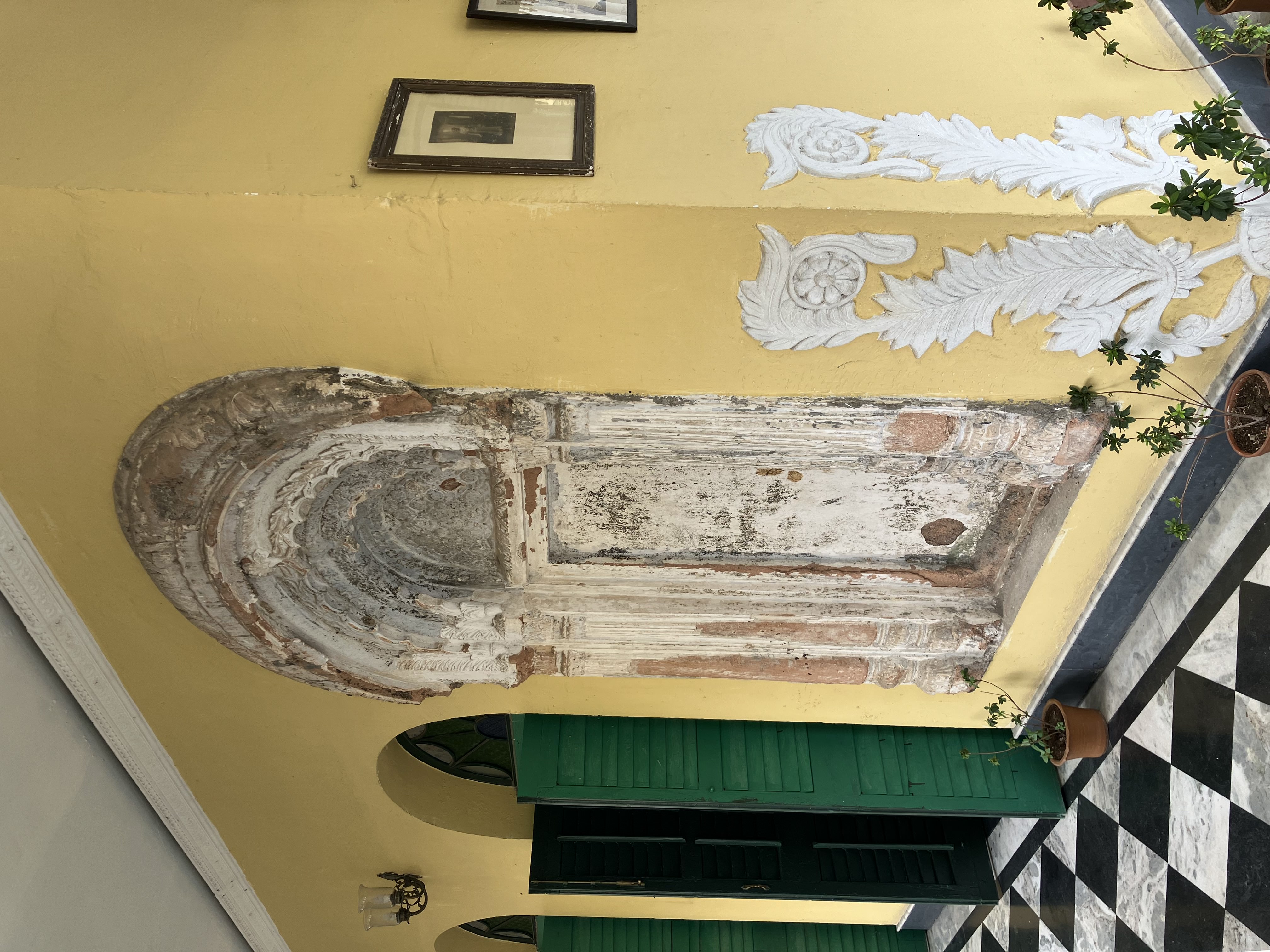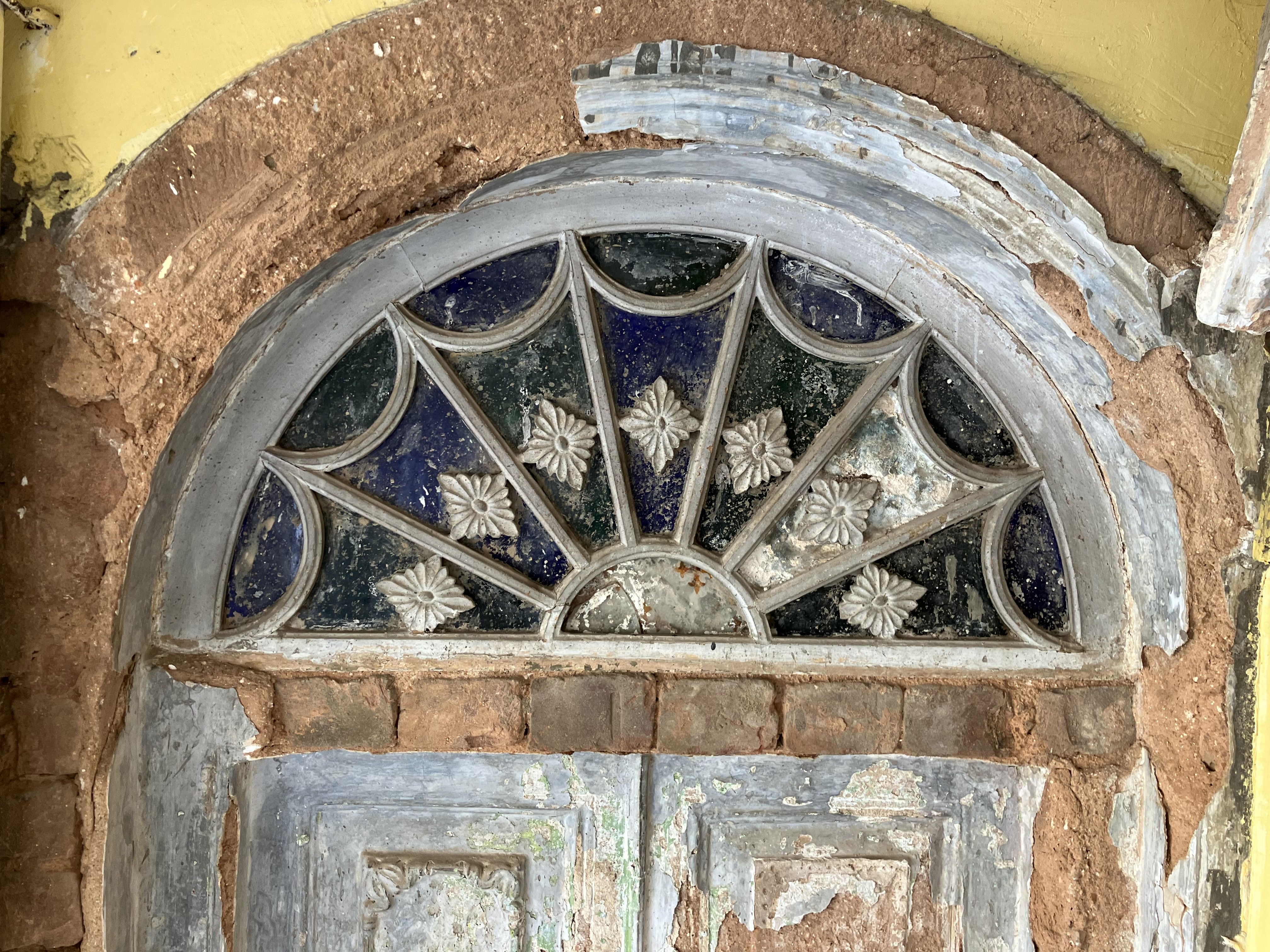
Fig 1: "Once a sentinel now a relic"
Seldom does history leave a ruin, with its memory intact. The urge to ask why is perhaps one of the most important tasks of a historian, unfortunately history does not have sentinels to protect truth. Hence much has to be retold in a manner which protects the truth. As Sir Walter Scott once remarked, "The real price of everything is the toil and trouble of acquiring it".
As the golden rays of the sun caress the historical city of Murshidabad, they illuminate a hidden secret, rather an illusion to be precise. nestled within the walls of Bari Kothi-the mesmerizing fake doors. Truth be told much has been lost to the tides of time, but fortunately a single sentinel stands upright undeterred by the ghastly scars which time has left.
Within the realm of Bari Kothi, the fake doors stand as the silent sentinels, poised to protect the treasures that were once hidden within the grand edifice. Crafted with utmost precision, they embody a complex ruse that deters ill-intentioned individuals from accessing the true entrances.

Fig 2. History being embalmed into the walls.
The art of deceit is also an art, one has to take into consideration how these terracotta doors can celebrate history, culture, and the vibrant tapestry of the region. The warm hues of terracotta paint an ethereal canvas, to anyone it may look very real, the structure itself resembles an actual door, however it once used to protect the legendary strong room.
A trap for miscreants! While the strong room itself was an impenetrable fortress. The fake doors often acted as countermeasures. Hence when such nefarious individuals decided to act on their impulses it was these doors that deterred them from achieving their goal. It would alert the guards who'd further nab the miscreants from doing any potential harm to them.
However what is more important is how seamlessly it blends with the architectural symphony that engulfs Bari Kothi. The fake doors of Bari Kothi provide a captivating glimpse into the fusion of Indo-Islamic influences that define its architectural splendor. The delicate interplay of Islamic arches, intricate Hindu motifs, and Bengali craftsmanship form an enchanting tapestry of cultural synthesis. reflecting the rich heritage and intermingling of artistic expressions. These influences weave together to create an otherworldly aura, transporting visitors to a realm where spirituality and art seamlessly converge.
If that's not all, the colored Morris glass that adorns these doors, serves as a testament to the skilled artistry of glassmakers who transformed ordinary glass into a kaleidoscope of hues. Each pane tells a tale of mastery, as brilliant shades of crimson, sapphire, emerald, and gold intertwine in a symphony of colors. The interplay of light and glass creates a mesmerizing dance, enveloping the interiors with a celestial radiance. As sunlight filters through the intricate patterns of the Morris glass, it transforms the space into a sanctuary of mesmerizing beauty.

Fig 3. "Where light meets art, Morris Glass weaves enchantment, sculpting ethereal beauty from the delicate dance of glass and flame."
Furthermore, the Morris glass serves as a testament to the era in which Bari Kothi was conceived-a time when the art of stained glass flourished. It harks back to a rich tradition that spans centuries, evoking a sense of nostalgia and connecting the present with the grandeur of the past. It stands as a reminder of the ingenuity and artistry of those who came before, leaving an indelible mark on the architectural heritage of Bari Kothi.
Almost everything that stands at Bari Kothi is a testament of the truth that was long buried within the world of ruins, today it stands proudly. After all, not fake doors, can narrate a tale of truth.